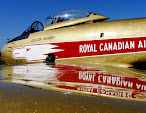The Lancaster trailing antenna mount, just below the leading edge of the attach point of the Bomb Bay doors does on the port side (left side), of the Lancaster.
The 'bobbles' or lead weights on the end of the antenna wire.
To restore this trailing antenna 'bobbles' just use lead weights.
One would need a few lead weights and also probably fishing line weights would do.
A piece of copper wire to make the trailing antenna with 'bobbles' or just Insert a bit to give the appearance of a trailing antenna. Which was reeled out and in, as needed during the flight.
Trailing aerial winch in photos below is the winch for a trailing aerial as fitted to Lancaster and other heavy bomber's. It is In excellent condition and it still function's perfectly.
For reception of communications signals, the receiver could be operated with either fixed or trailing aerials; a fixed aerial was normally used for the HF (High frequency) radio frequencies between 3 and 30 MHz., and the trailing aerial for airborne installations on the MF ranges or Medium Frequencies which are designated for distress and safety purposes.
If this failed Lancaster's carried 2 homing pigeons. The trailing antenna mount, again is located just below the leading edge on the port side of the Lancaster. The main part or winch device is located by the Wireless Operator with its motor breaker, located on the starboard interior wall across from the
Wireless Operator.
END
by Richard Abbenbroek
One would need a few lead weights and also probably fishing line weights would do.
A piece of copper wire to make the trailing antenna with 'bobbles' or just Insert a bit to give the appearance of a trailing antenna. Which was reeled out and in, as needed during the flight.
Trailing aerial winch in photos below is the winch for a trailing aerial as fitted to Lancaster and other heavy bomber's. It is In excellent condition and it still function's perfectly.
For reception of communications signals, the receiver could be operated with either fixed or trailing aerials; a fixed aerial was normally used for the HF (High frequency) radio frequencies between 3 and 30 MHz., and the trailing aerial for airborne installations on the MF ranges or Medium Frequencies which are designated for distress and safety purposes.
If this failed Lancaster's carried 2 homing pigeons. The trailing antenna mount, again is located just below the leading edge on the port side of the Lancaster. The main part or winch device is located by the Wireless Operator with its motor breaker, located on the starboard interior wall across from the
Wireless Operator.
END
by Richard Abbenbroek











No comments:
Post a Comment